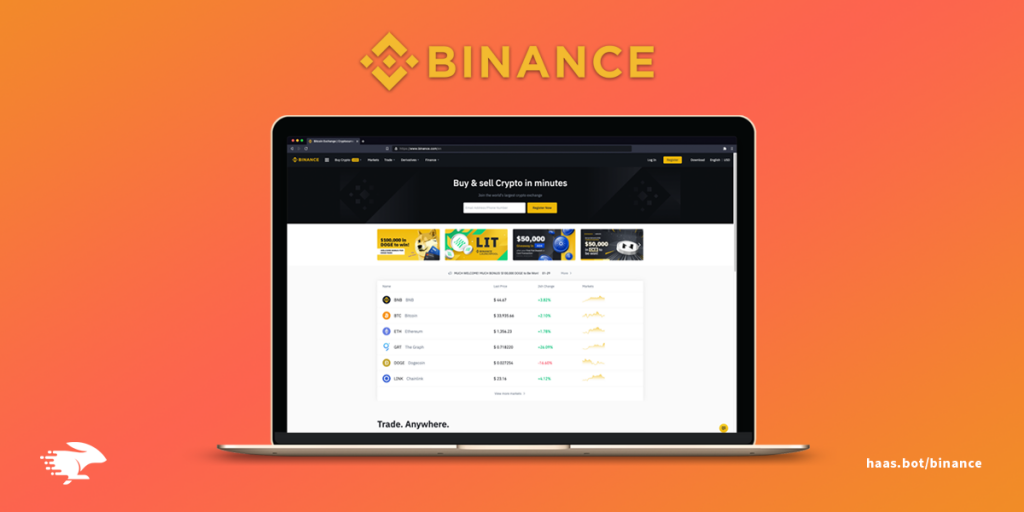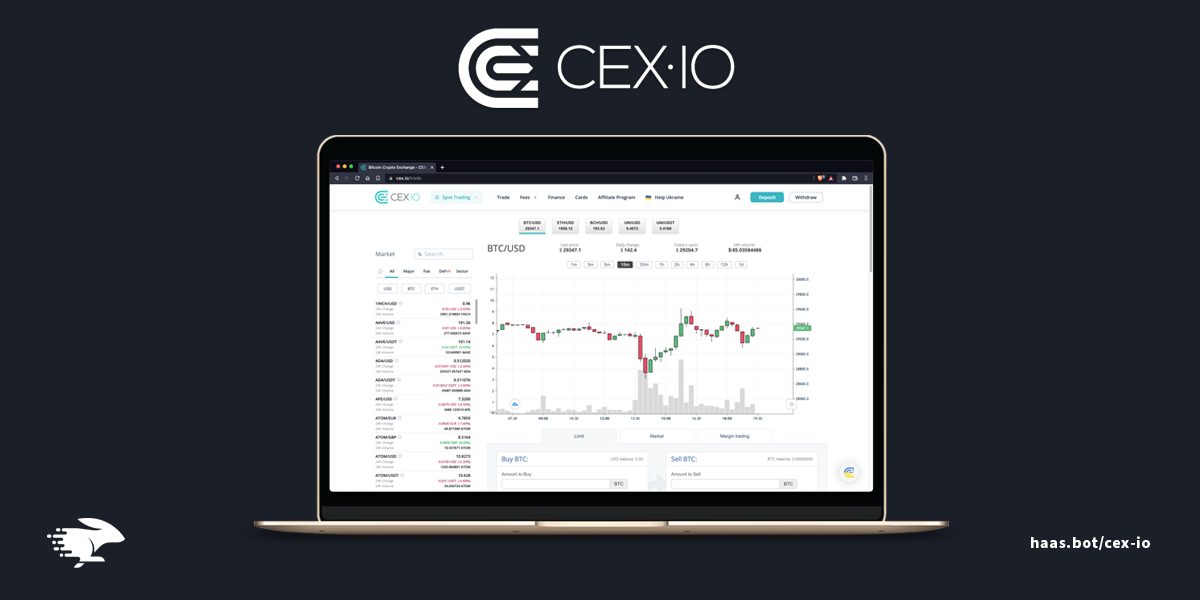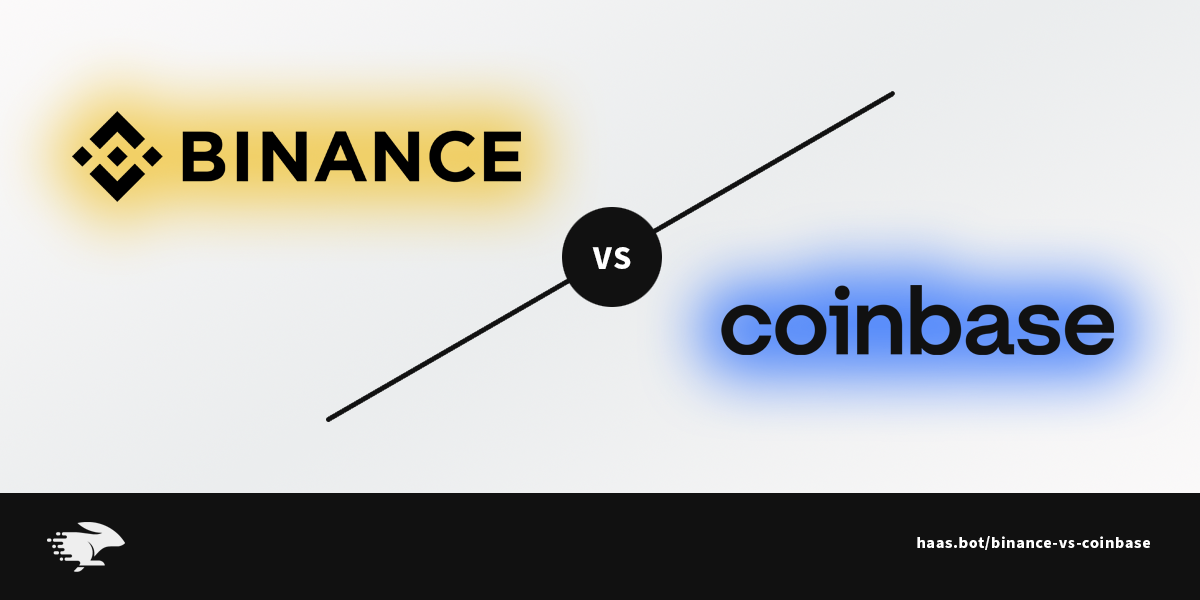
In this article, we will cover the main features of margin trading on the Binance exchange platform, a full step-by-step guide on how to do it, and the risks associated with margin trading.
In a nutshell, margin trading allows users to trade with borrowed funds in order to amplify their capital. The amount you can borrow – also referred to as leverage – is determined by the individual exchanges.
For example, if you had an initial deposit of $20 to trade, and executed a margin trade with 50x leverage, you can now trade with $1000. Of course, all this comes with a calculated interest rate, as well as the risk of volatility.
Binance Margin Trading: A Step-by-Step Guide
Step 1 – How to Set Up an Account for Margin Trading on Binance
Once you log into your account, go towards the upper right-hand corner, and simply hold the pointer over your profile symbol. It will display the initial letters of your email. Use your email address to get to your Binance account dashboard.
Once there, you’ll get visual access to your funds. If you want to open an account for Margin Trading, tap on “Margin”, right under “Balance Details”. If your account hasn’t been verified yet, you’ll be prompted to start the KYC process. It’s also obligatory to enable 2FA before trying any further actions.
Step 2 – How to Transfer Assets to Your Margin Wallet
You can transfer funds to your margin wallet immediately upon activating your margin account. You need to press the “Wallet” button, go to “Margin”, and click on “Transfer”.
Then, choose which coin you want to trade with. Let’s say you want to trade BTC/USDT. Add the exact amount you want to pass to your margin wallet and select “Confirm Transfer”.
Step 3 – How to Leverage Funds
When you transfer your BTC into your wallet for margin trading, they’ll be used as collateral for borrowed funds. The number of coins you have transferred will determine how much of your target coin you‘re allowed to borrow. Binance offers a default 5x leverage rate, so the most you can get is four times what you already have.
Let’s say you want to borrow BTC. After picking the coin and the amount you want to borrow, confirm by clicking “Confirm Borrow”. The BTC you’ve just borrowed will be transferred to the Margin Account you’ve already created. Now, you are all set to trade these borrowed funds.
At this point, you have a certain debt as well as a borrowing rate. Remember that the rate is calculated hourly. You can go to Margin Fee to read more about the current rates and the pairs available. You could also check the status of your margin account on “Wallet Balance” by choosing “Margin”.
Step 4 – Margin Level and Liquidation
The margin level calculates the level of risk based on the funds you’ve borrowed (Total Debt) and funds invested on your margin trading account as collateral.
The degree of risk depends on the market fluctuation. This means that when prices break against your predictions, there’s a chance that your assets will be liquidated. Remember that once the liquidation is initiated, there are additional fees you have to pay.
So, in case the margin level reaches 1.3, you’ll receive an alert, known as Margin Call. It reminds you to either add up to your collateral or lower your credit by settling the funds you’ve borrowed. Moreover, when the margin level is reduced below 1.2, all your funds will be liquidated immediately. In this case, your funds will be sold at market value to settle the loan.
There is a simple mathematical formula to calculate the margin level:
Margin Level = Total Asset Value / (Total Borrowed + Total Accrued Interest)
Step 5 – Trading on Margin
You can enable trading with borrowed assets in the Exchange section by selecting “Margin”. As for trading, Binance lets you execute the following orders: limit, stop-limit, OCO, and market.
Step 6 – How to Move Funds Back
Afterward, select the type of coin and quantity and press “Confirm transfer”.
Shifting your assets between two wallets is free of charge. However, never forget that if you have any assets borrowed at that point, your risk will grow as the amount in your wallet declines.
Margin Trading Example
Let’s say you have 5,000 USDT and go for 5x leverage. At this point, you are allowed to borrow an amount of 20,000 USDT, and together with your 5,000 USDT, you have 25,000 USDT to trade. This higher trading volume means that you can increase your profit several times.
Say you’ve been following the market trends and you’re confident that Bitcoin’s price will go up. You decide to sell all of the 25,000 USDT for 5 BTC. Assuming that the BTC price doubles 24 hours after your purchase, you can sell your 5 BTC for 10,000 USDT each. Now you own 50,000 USDT. What you need to do first is settle the debt towards your creditor, which is 20,000 USDT plus interest. If the interest rate is 0.02% for four hours, you will need to pay 16 USDT, which is 0.12% of your 20,000 USDT loan. Basically, you’ve earned 24,976 USDT.
Unfortunately, this story may have a completely different outcome. If your predictions were wrong and Bitcoin’s price drops by 30%, you will be left with 17,500 USDT. And don’t forget the debt of 20,000 USD you owe, plus the interest. To put it simply, you’ve lost more than half of your investment.
Therefore, when it comes to margin trading, don’t rush. Observe the market carefully and trade wisely.
The Advantages and Risks of Margin Trading
The main advantage of margin trading over regular cryptocurrency trading is the opportunity to boost your profits from a considerably lower investment. Furthermore, traders have the chance to open multiple positions with less capital invested, which can diversify their portfolios. Finally, users with margin accounts find it much easier to open positions without having to wait for large-volume transfers or web confirmations.
However, the possibility of making large profits from a significantly smaller investment comes with a high degree of risk. Using leverage is obviously alluring as it can amplify your gains in no time if you predict the market direction correctly. However, losses can really add up if the market turns against you, so to speak. In case of liquidation, all your investments can be immediately lost. Therefore, it’s more than necessary to be careful and to include sensible risk management when dealing with margin trading and leverage.
In any case, it’s definitely worth trying.
Conclusion
Clearly, leverage trading is a double-edged sword in many respects. You can win big or lose big depending on how cautious and experienced you are. We highly recommend that you carefully consider both the advantages and disadvantages before trading on margin. Although there’s no guarantee that the market will move in your desired direction, highly-skilled cryptocurrency traders are encouraged to experience financial freedom by using leverage trading wisely.




